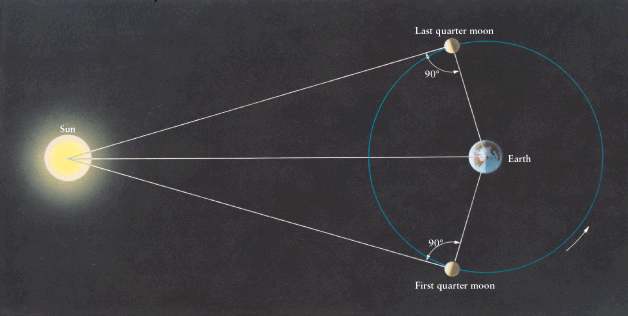Draw a right angled triangle of angle 30 degree as shown in the figure. Let the length of the hypotenuse be 1 unit.
We know sine 30 = opposite/hypotenuse = opposite side/1 unit
Hence sin30 is the length of the opposite side which is 0.5 unit. Hence sin30=0.5
similarly
cosine30=cos30=adjacent /hypotenuse =.87 unit
This ratios sin30 and cos30 holds good for any smaller or larger triangles. We can find any side of the triangle using these ratios.
We can find the sine and cos values for angles from 0 to 90 degree in this way. Also they are available in ready table form. This 'sin and cos' concept is also extended to the angles 91 to 360 degree, Here, we have to incorporate positive and negative signs suitably (refer).
Now,
tan x = sin x/cos x = opp/hyp/ adj/hyp = opp/adj
When 'sin' is divided by 'cos' , the ratio of opposite side/ adjacent side is obtained. We call it 'tan'. (tangent)
Say, you are standing 40 m from a tall building and you are viewing the top of the building. Say, the viewing angle is 45 degree from the horizontal.
Here the line of sight is the 'hypotenuse', building is the 'opposite side' and the distance between yourself and the building is adjacent. The tan45 is 1. That means, adjacent and opposite must be equal. The building height must be 40 m. This is just one example for the use of trigonometry.
Sun, Earth and moon sometimes form a right angled triangle. Atoms may lie in a triangle. Trigonometry can be applied in both the cases. That is real beauty.
From sin and cos, hundreds of trignometric functions and formulas can be derived.
for example;
sin^2x + cos^2 x = 1
in our case (.5)^2 + (.87)^2
for 30 degree .25 +.75 =1 verified.
The above equation is the trigonometric form of Pythagoras theorem.
Light ray practically travels in straight line. Hence, in geometrical optics, trigonometry is widely used.
The value of sine function for 0 to 360 degree oscillates between 0 -1- 0- (-1). Hence a wave form is created. Sine wave is applied everywhere in physics.
The trigonometry connects, distance, angle, circle, waves using compact functions like sin x.

